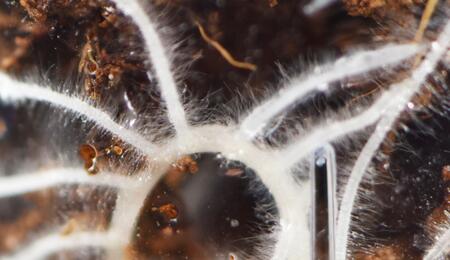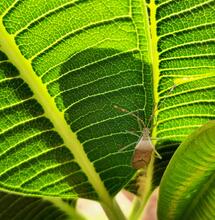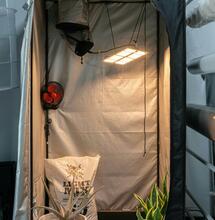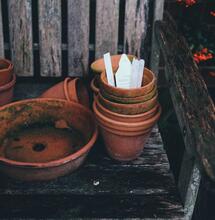Back to basics – What plants need

There is a lots of hypes and ground breaking news about a cannabis growing during last years. It is great to follow and try new technics, new equipment and growing systems. Anyway, the only way to reach spectacular harvest is to not forget for basics. Let’s get back to basics and summarize what a lots of growers are sometimes forgetting.
Photosynthesis
I am sure all good growers is familiar with unique process of photosynthesis. From the perspective of a human, the most important fact is that it produces oxygen, without which we would not be able to live on Earth. However, from the perspective of plants, oxygen is just one of its side products. In the process of photosynthesis, plants absorb carbon dioxide (CO2), water, nutrients, photosynthetically active radiation and heat, which they transform into oxygen and carbohydrates. While they release most of the oxygen into the air, they use the carbohydrates as a source of energy to grow and survive. The better and faster the photosynthesis takes place, the more carbohydrates plants can produce. The main goal of every gardener is to encourage speed of photosynthesis as much as possible. When the conditions for photosynthesis are optimal, the plants have more energy for their growth and flowering. The process when simple inorganic compounds are forming more complex structures is called assimilation.
If one of the components necessary for photosynthesis is missing or there is not enough of it, the process either occurs only partially or not at all. If, for example, the plants do not have access to light, such as during night, photosynthesis does not occur. But even then, the plants still use energy to maintain their vital functions. At that point, they disassemble the complex structures in the form of carbohydrates back into simpler structures. This process is called dissimilation and it is the exact opposite of assimilation. If you want your plants to use energy mostly for their growth and flowering, you have to minimize dissimilation and maximize assimilation by encouraging and accelerating photosynthesis. This can be achieved by establishing a proper climate and the general operation of the grow room.
Water
Plants, like people, are mostly made up of water. 70-80% of fresh plants’ weight is made up by water, and it plays a key role in their various metabolic reactions, including photosynthesis. However, up to 98% of absorbed water is transpired back into the atmosphere. Water is fundamental for the transport of substances in plant organism. It dissolves nutrients and transports them to places where plants need them. It can also cool down the plant in case it is necessary, or prevent its temperature from going down rapidly. Thermoregulatory function of water could be used by growers as an excellent way to increase CO2 presence. In an ideal scenario, water flows continuously inside the plant from the roots up to the leaves, where it leaves the plant and is released into the atmosphere in the form of vapour. It would not be possible without significant surface tension of water, enabling capillary elevation, transpiration and root buoyancy.
[caption id="attachment_39574" align="alignnone" width="1920"] Stomatas on leaves play a key role in transpiration process.[/caption]
Inadequate watering slows the growth of plants and great shortages of water end in plant death. With optimum amounts of moisture, the plant thrives. With excess watering, first the roots – from which the plant takes its nutrients – start to get mouldy. If the excess persists, the plant begins to turn sallow. In extreme cases it starts to get mouldy and the stalk and plant die out completely.
Cannabis plants absorb water via their root system, mostly through thin hairs on the surface of the roots called root hairs. They are visible to the naked eye – and the best time to observe them is when germinating seeds on germinating paper. If you want the roots to receive the necessary amount of water, you need to create optimal conditions for them – this means achieving the right temperature and providing enough oxygen. If the temperature is too low or too high in the root region, the water uptake capacity decreases. With extreme temperatures the capacity is blocked completely.
Nutrients
Most of the nutrients are absorbed by root hairs with water. Cannabis plants, as same as other higher plants, are able to absorb some nutrients by leafs too. Foliar nutrition is mostly use as fast remedy for nutrient imbalance or to add trace elements and vitamins to plants. However, root nutrition is far more important than foliar nutrition. Primal source of nutrients is a soil. It contains different amount of humus. Humus is complex of necrotic micro-organisms, plants, animals and fungi and strongly affect concentration of nutrients in soil and its availability for the plants. Plants are not absorbing nutrition elements from soil at the same concentration as they are present in there. Due to big difference between concentration of nutrition elements in soil and needs of plants, roots have ability to regulate uptake of particular nutrients separately from others. There is also possibility to grow plants without soil in inert growing medium, e. g. hydroponically or aeroponically. In such case all nutrients are dissolved directly in water and distributed directly to root zone.
Light
Light is one of the basic elements in photosynthesis and plants need it for life. Without adequate light they do not have energy for photosynthesis. Plants will not grow the way we want them to and you will never achieve the harvest of your dreams. For indoor growing, artificial light is the first thing you need to think about and use to its maximum effect. Plants are equipped with three main photosynthetic pigments, able to use energy of light. Chlorophyll A absorbs the most of energy of blue and red light spectrum. Chlorophylls B and C transfer absorbed energy to Chlorophyll A. Carotenoids do the same and protect photosynthesis apparatus against damage from excessive radiation. For plants, photosynthetically active radiation (PAR) is necessary. The growth of your plants will depend on the amount of PAR they receive.
Air – CO2 and oxygen
Plants require more CO2 then humans, and they are able to produce an adequate amount of oxygen themselves. A lack of these elements will have the result of slow or interrupted growth, yellowing of the leaves and small, meagre flowers. It is necessary to regularly and effectively ventilate a grow room, not just on account of CO2 intake, but also often to maintain the required temperature and humidity. Therefore devote great attention to ventilation and CO2 level in your grow room.
Heat and humidity
Cannabis has its favourite temperatures and also grows according to the changes in temperature. If you do not ensure the required temperature, it will not grow in the way you expect. The day temperature should vacillate between 24–28 °C (75–82 °F), (never more than 32 °C = 90 °F), and at night should not fall below 16 °C (60 °F). Air humidity plays crucial role in transpiration process. It is necessary to control air humidity and temperature together to achieve optimal conditions for fast photosynthesis.
[caption id="attachment_39575" align="alignnone" width="1707"] Healthy bud.[/caption]
Transpiration speed depends, among other things, on the difference in water vapour pressure inside leaves and in the surrounding environment (vapour pressure deficit – VPD). Inside the leaf, there is always 100% humidity and the water is present in liquid form. Before transpiration into the atmosphere, the water under the leaf surface turns into steam. This creates above mentioned pressure because the steam requires much more space than water. The level of the water vapour pressure inside the leaf also depends on its temperature. The VPD pressure value is determined by the temperature and relative humidity. The following VPD values are recommended for optimal transpiration speed. For cloning and early growth stage 0.4–0.8 kPa, for ending growth stage and beginning of flowering stage 0.8–1.2 kPa and for second phase of flowering 1.2–1.6 kPa. To get more information about VPD, check out my older article named Water and plants. Thank you for attention and stay tuned!



.png)